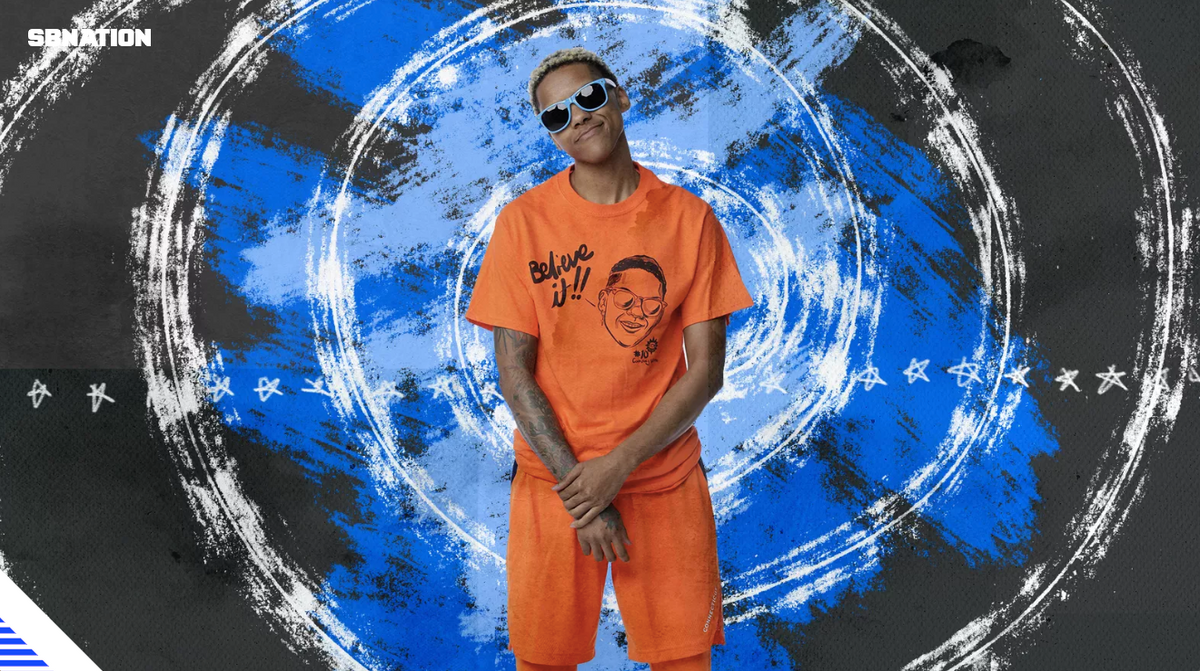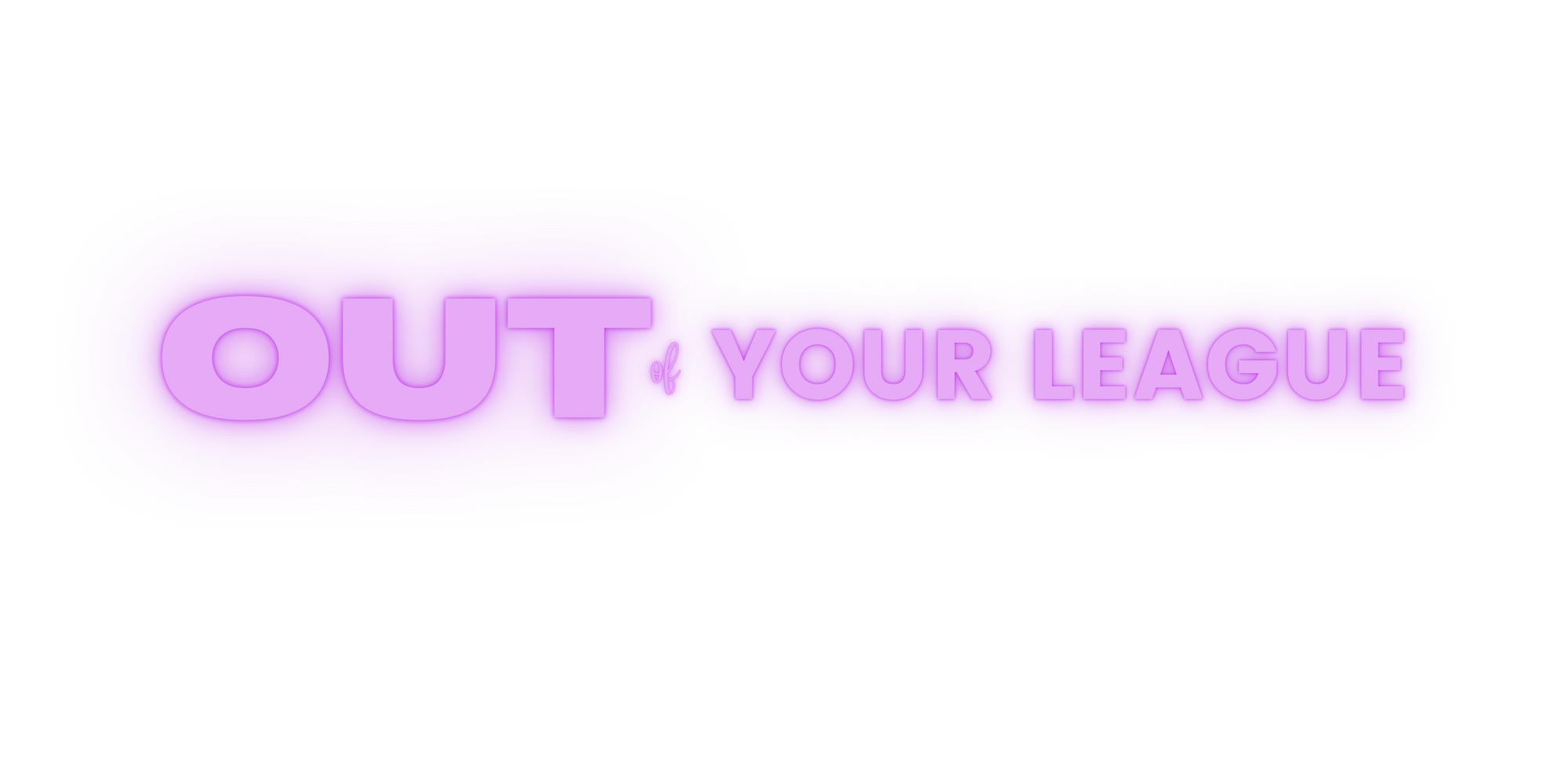i get by with a little (lot) of help from my editors
i got to profile my favorite basketball player

If you follow me even a little bit, you’re probably completely unsurprised about the WNBA player I profiled in the lead up to the season (which starts today! A bunch of TV deals have happened so you can more easily watch games! You can also buy the WNBA League Pass for just $16.99 FOR THE ENTIRE SEASON). I have been an unabashed Courtney Williams fan since the first time I saw her play last year, which I describe in the story for SB Nation:
I first saw Williams play in person in July last season against the New York Liberty, and I couldn’t take my eyes off her. She seemed to be everywhere all at once, the ball perpetually sailing from her hands into the basket. Her game seemed implausible; someone so small shouldn’t be physically able to take up so much space. She radiated joy. She scored 16 points but it felt like 30.
I spent most of the 2018 playoff game where Courtney scored like a bazillion points (it was actually 27) tweeting things in all caps and being gleeful that the rest of the country was finally noticing how nasty she is.
I knew when I left that game in July that I needed to write about Courtney. As I watched her in that playoff game the following month, I knew that her performance (and subsequent mini-beef with league superstar Diana Taurasi) had likely given me what I needed to convince a publication to let me write it.
I got in contact with the team to make sure they were game for a story (they were) and, paranoid someone else with a staff writing job and therefore guaranteed story placement would have the same idea as me, asked them for an exclusive (they granted it). I then set about trying to convince sports publications that very rarely cover the WNBA that they should profile this player who wasn’t yet a superstar (while historically, most sports pubs have not covered the league, that’s beginning to change, which is very exciting).
I’ve talked about this before, but the bar is so much higher for women’s coverage than for men’s. I keep coming back to this same example, but I think it’s illustrative, so forgive me if you’ve heard it already: I wanted to do a story for the WNBA draft, and a team and the league both gave me several different high-access options to build a story around, including shadowing a player throughout her entire draft day. The publication I was in talks with wanted the team to grant me access to literally be in the war room with the team’s GM during the draft, or it was a no go. That level of access is almost unheard of! The team (understandably) said no, and so did the publication to my draft story. Meanwhile, how many NBA draft stories are being run with no access, based on Twitter threads and aggregations of other people’s reporting?
And if you do get a story placed about a female athlete, it usually has to be a superstar — a Diana Taurasi or Sue Bird — because pubs don’t think that an unknown or up-and-coming player will garner the clicks and interest that the established stars will, in a landscape where the average sports fan doesn’t know many female athletes. Or if the story is not about an exceptional woman, it must be about a groundbreaking woman — the first to do this thing; they tend not to care about the women who come next.
This story was rejected three times before finding its home. One pub was interested but ultimately passed, another (male editor) sent a bulleted list of all the reasons my thesis for why this (female) player deserved a profile was wrong, actually. The third never responded. I was beginning to panic that I’d been given this exclusive and I wouldn’t actually get to write it, that no one would see the potential in Courtney’s story that I had seen.

But those rejections were the best thing to happen to this story. I have a “rejection pep talk” that I give my students; in it, I say that rejections are good because it means you’re one step closer to finding the story its rightful home. This is a case where that proved to be so true. SB Nation didn’t just accept this pitch. They were STOKED about this pitch. They were so excited to tell Courtney’s story. I cannot tell you how good it feels, as a writer, to have an editor respond with so much enthusiasm about your story idea. Writing for a place that is as excited about your story as you are is the best possible outcome.
The other best thing about this story landing at SB Nation is that I got to work with Louis Bien for the first time, and shoutout to Louis for being one of the best editors I’ve ever worked with. No exaggeration. I know we’re only a few issues into this newsletter and you’re probably sick of hearing about my editors at this point, but you’re going to keep hearing about my editors. Because these big stories, these massive, sprawling features? They are not just products of my brain.
I am not a brilliant writer who tells the perfect story and a publication runs it. Increasingly, I am a writer who has the privilege of collaborating with incredible editors who make my work better. This is the biggest lesson I’ve learned as my career has gotten further along and I’ve written bigger stories for bigger pubs: the stories I aspired to write, the ones I am writing now, are the product of publications with the capacity and budget for intensive editing, to the point that the final product is quite literally a collaboration, almost as much mine as my editor’s in certain ways. I wish I had known this earlier on in my career because it would have made me doubt myself less, I think, to know that the very best writers actually just have the very best editors to make them look good.
Editors like Louis who take the 5,000 words of copy I sent him and can take a bird’s eye view of the narrative structure and see it for what it should be. When Louis and I first chatted about my reporting process, I mentioned that I would probably send him a bunch of decent copy and he would have to move things around to make them flow better. He replied, “That’s my favorite part.” He did not disappoint.
All of this is to say, thank you to Louis and the rest of the SB Nation editorial team for helping me tell Courtney’s story in the best possible way.
This is also where I admit to more imposter syndrome: I’m a pretty brazen story pitcher. I pitch with abandon, and propose incredibly ambitious stories. Then they get accepted and I panic. This was one of those. I’m new to basketball writing; I just started really following WBB last year (it was an intentional shift away from baseball, because I was sick of watching a sport that hated me and that was probably full of athletes I’d probably hate if I knew them. I actually talked about this on the Tipping Pitches podcast this week, if you want to listen).
As soon as the pitch was accepted, I began to panic that I was totally out of my depth. It was also the biggest player profile I’d ever written. What if I am bad, actually? Most of my close friends will tell you that I panicked in their inboxes about this story at some point over the past few weeks or months. I have come to learn that panic and doubt are part of the writing process, that most writers struggle with them, and when I stop feeling that way it probably means it’s time to consider doing something else.

Courtney’s dad, Don, texted me after our interview to say, “put us on the map now!” But Courtney was already on it; I just feel really lucky to have gotten to introduce more people to the light that is Courtney Williams. As she said to me after I thanked her for sharing a particularly painful memory with me during our interview, “It’s all love, baby.”
I hope reading her story brings you as much joy as writing it brought me. And if you’ve never watched before, I hope you’re inspired to check out the WNBA — and Courtney Williams — on the court this season. She’s ready to show you what she can do.
